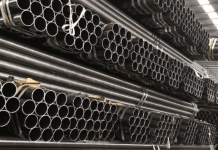In carpentry, the hammer which is very useful and multifunctional and could be called the most important and unquenchable tool is among the few utensils that are at the top of the priority in any cabinet. Whether it is fixing nails in the wood or constructing complex frames, the hammer will surely be your perfect companion and will help you to get quality work done. Hence, choosing a hammer that will serve your purpose among the vast number of choices will not be an easy task. Let us go through the key aspects that you are supposed to take into consideration when the choice of hammer for carpentry works is being made. Additionally, if you are a carpenter and looking for a quality hammer manufacturer, visit the mentioned link.
Understanding Hammer Types
It’s crucial to comprehend the many hammer varieties that a carpenter is going to use at work before we continue. Claw and framing hammers are the two most popular kinds of hammers. While claw hammers are incredibly helpful instruments for a variety of jobs, framing hammers are designed specifically for heavy-duty framing activities.
Weight Matters
The main point to consider while selecting the hammer is its weight. The weight of a hammer is often an important factor in carpentry projects. For tasks such as hammering nails and small assembly, a hammer weighing between 16 and 20 oz is ideal. The lighter hammers of 8 or 16 ounces are very easy to use for light framing work. Nevertheless, for the heavier framing work, the heavier hammers of 20 to 32 ounces prove to be much more useful.
Handle Material and Grip
The material and grip of the handle are very important in the level of comfort and control. A wooden handle gives a strong traditional feeling and absorbs shocks very well, but it is a weak point under heavy use. In contrast to the fiberglass handles which are lightweight, tough, and impervious to damage.
Head Design
The way of hammer head is designed determines its effectiveness and efficiency. The face of a claw hammer is usually flat for driving purposes and curved claw for removal purposes. The surface of the framing hammer, however, is frequently milled or waffled for the nails to be held properly and to prevent slippage. In addition, some hammering frames also integrate a magnetic nail starter, which can be quite useful.
Durability and Quality
Investing in a high-quality hammer may seem costly at first, but if it lasts longer then it will surely recover your money. There are lots of hammers available, but if you want the best strength and longevity, try to go for hammers constructed of sturdy materials like heat-treated steel. Inspect the construction and craftsmanship to make sure all the strong and well-tightened components are there and nothing can compromise the performance.
Conclusion
Whether they are novices or experts at house renovations, carpenters always need hammers. Any carpenter’s essential toolkit is an excellent hammer. You can choose a hammer that will give you performance, accuracy, and comfort when working by measuring things like weight, handle material, head design, balance, and durability. Take it from a fellow carpenter – with this hammer right beside you, you’ll be ready to conquer any carpentry task with ease and aplomb.










